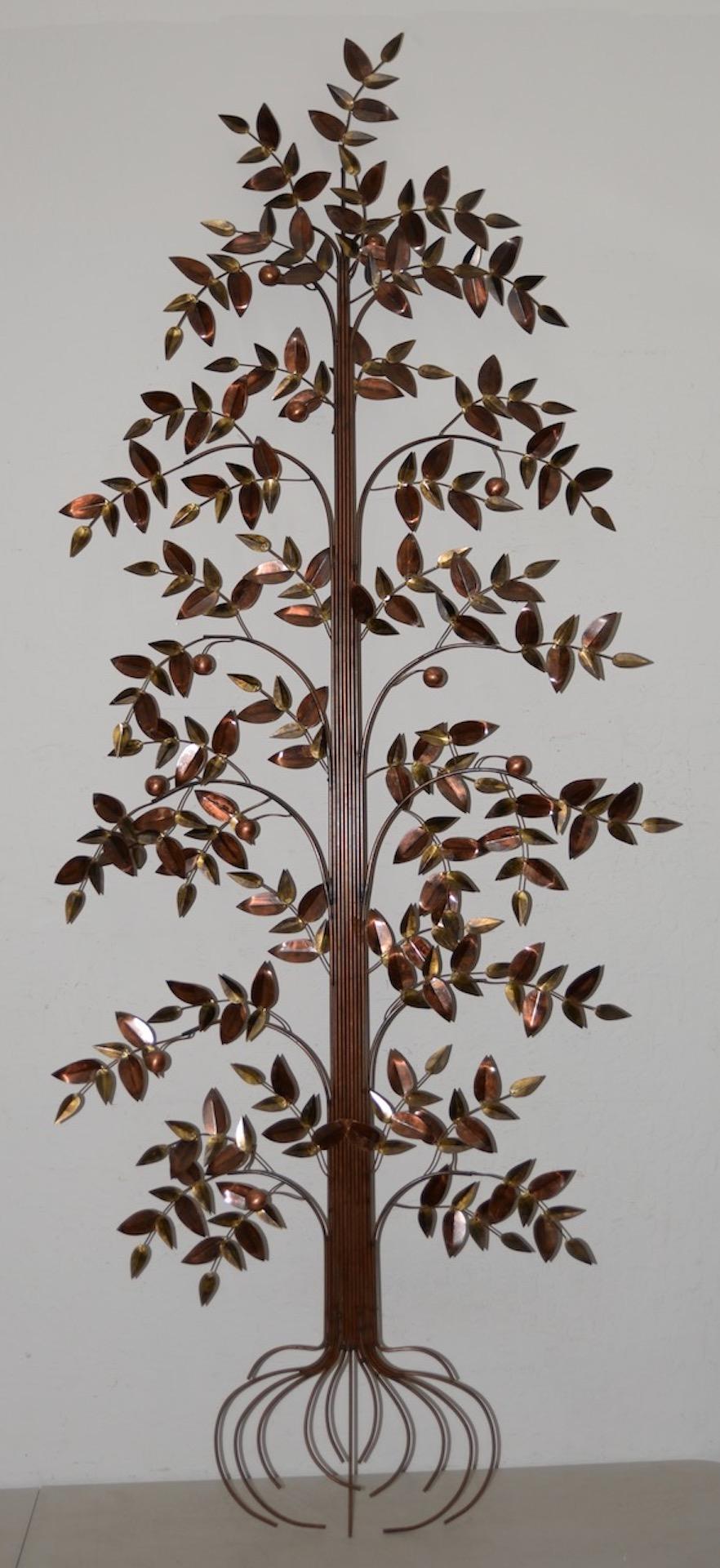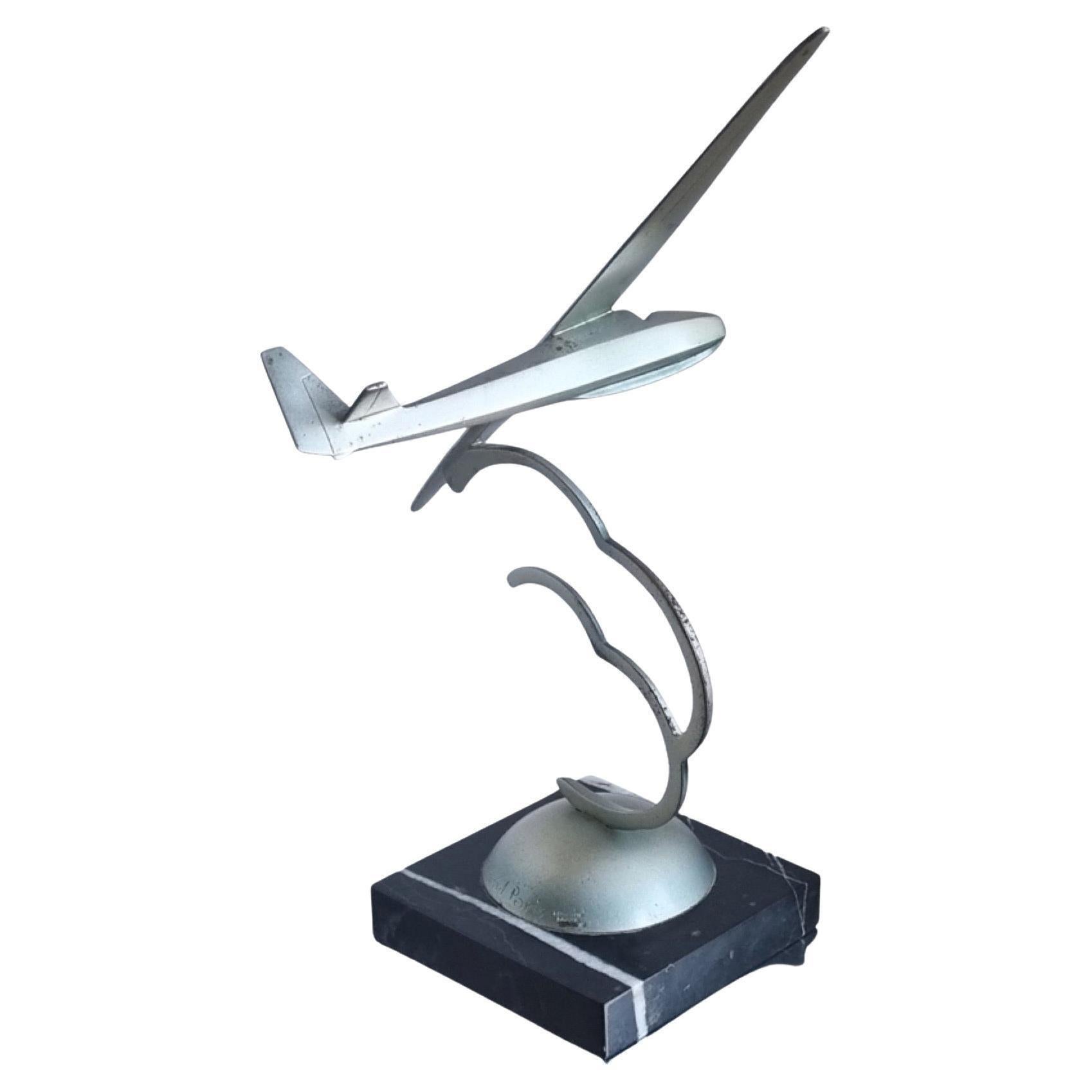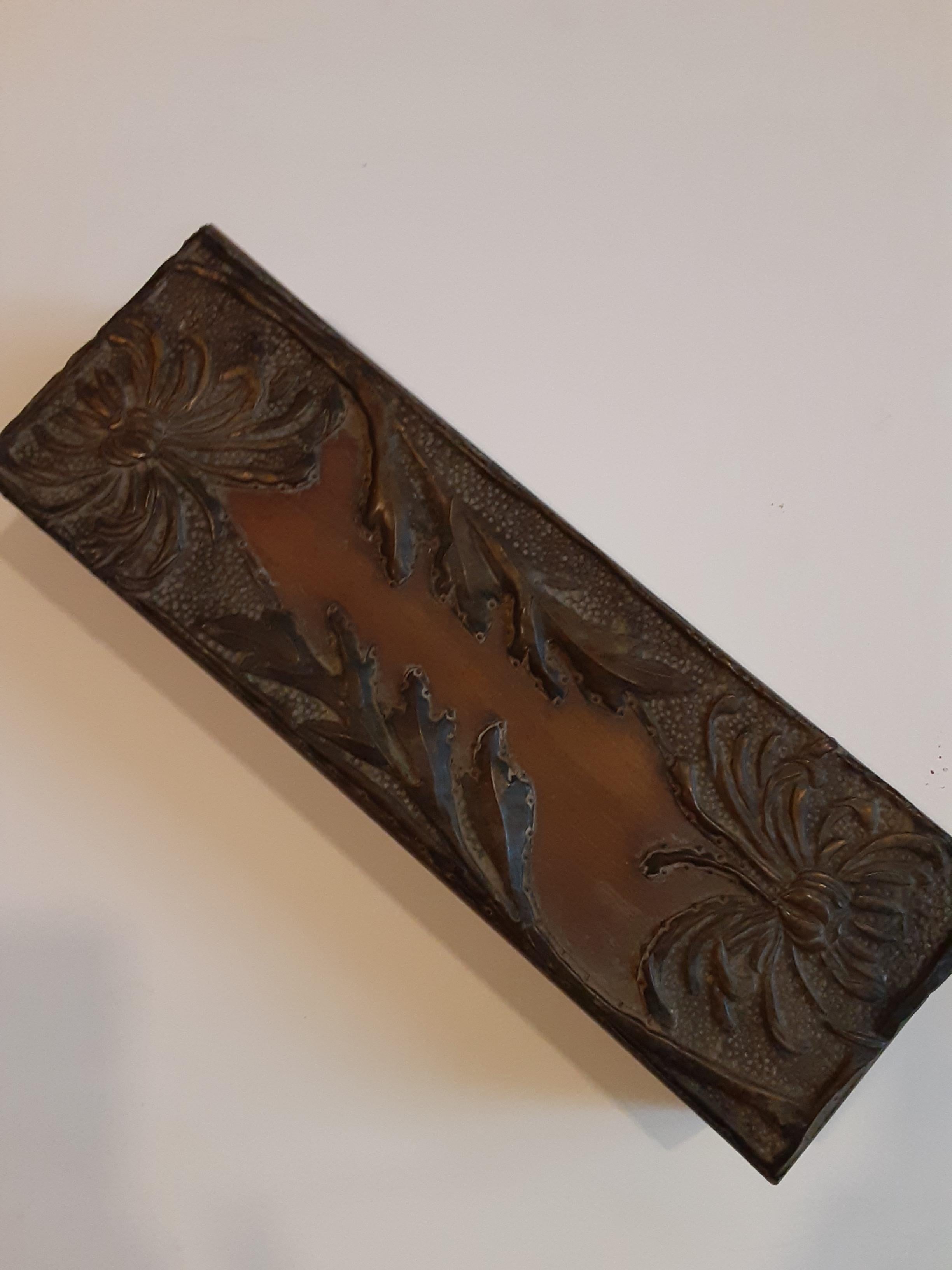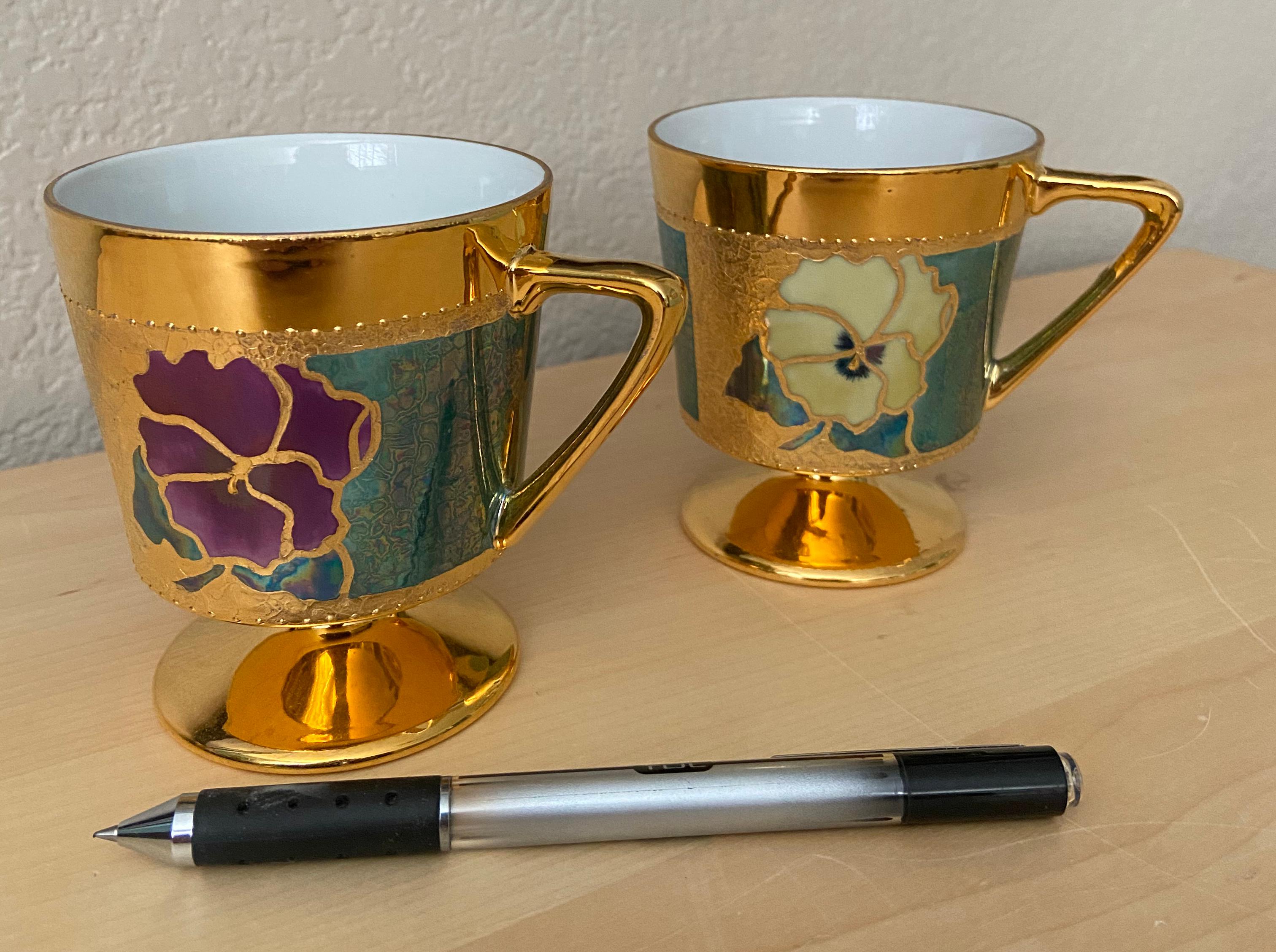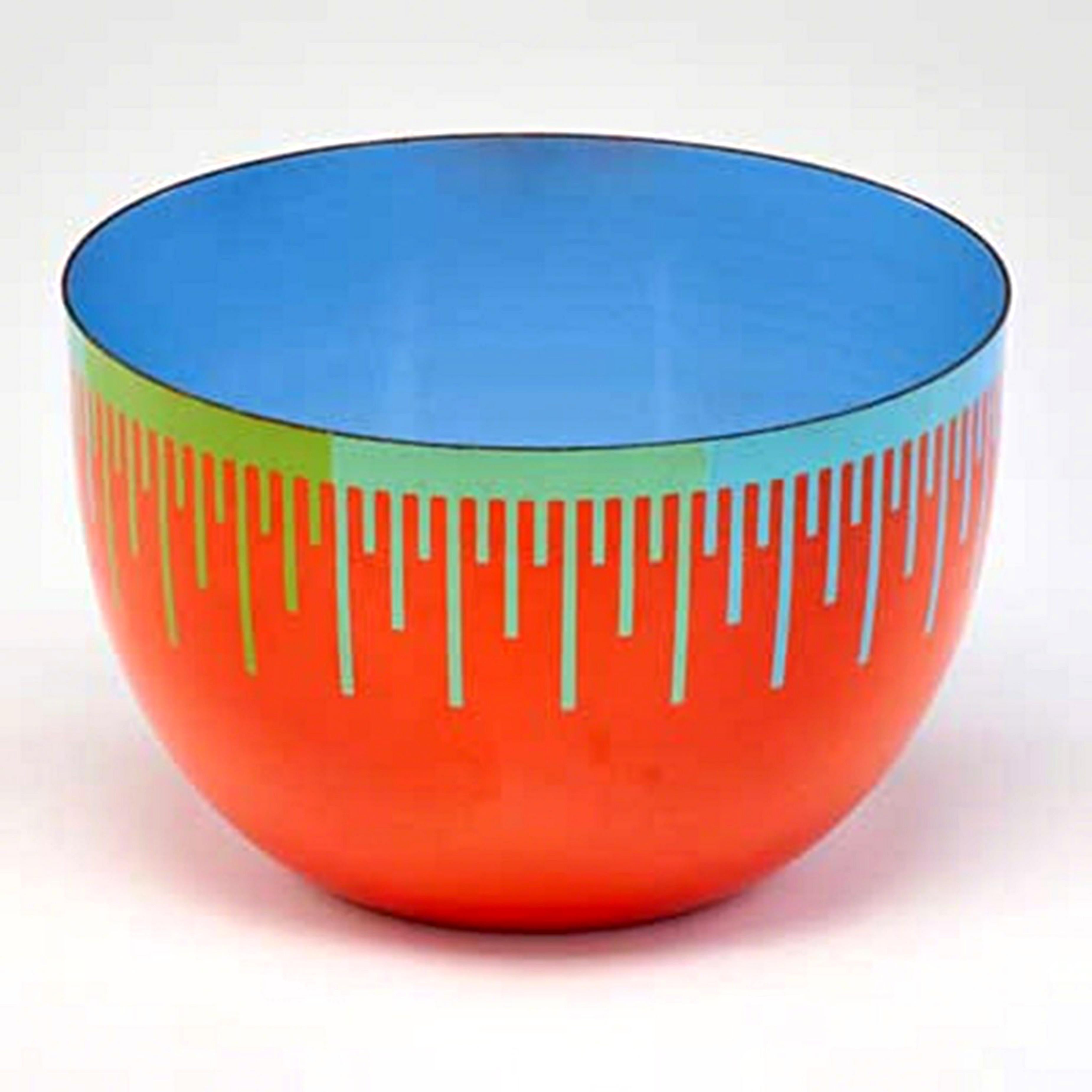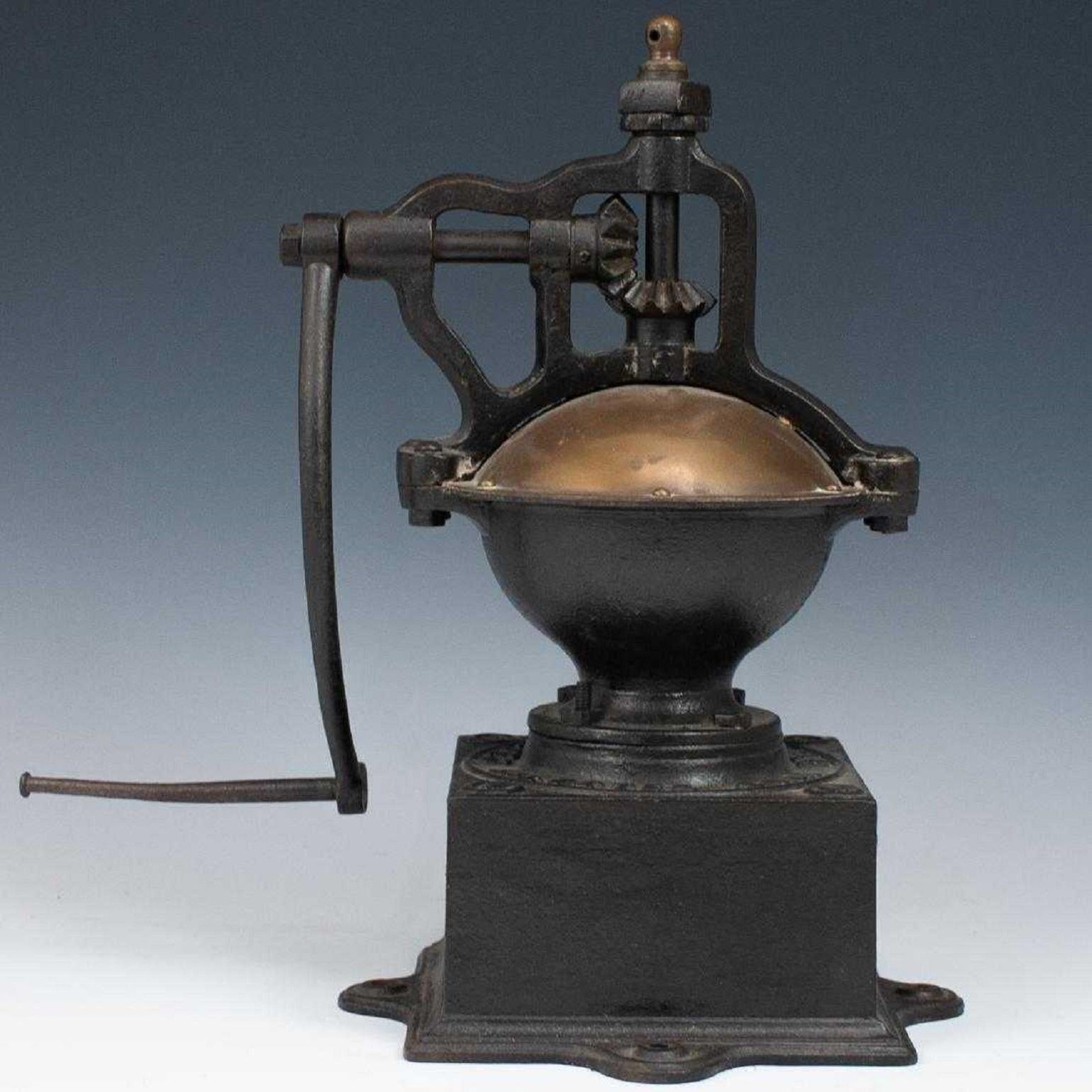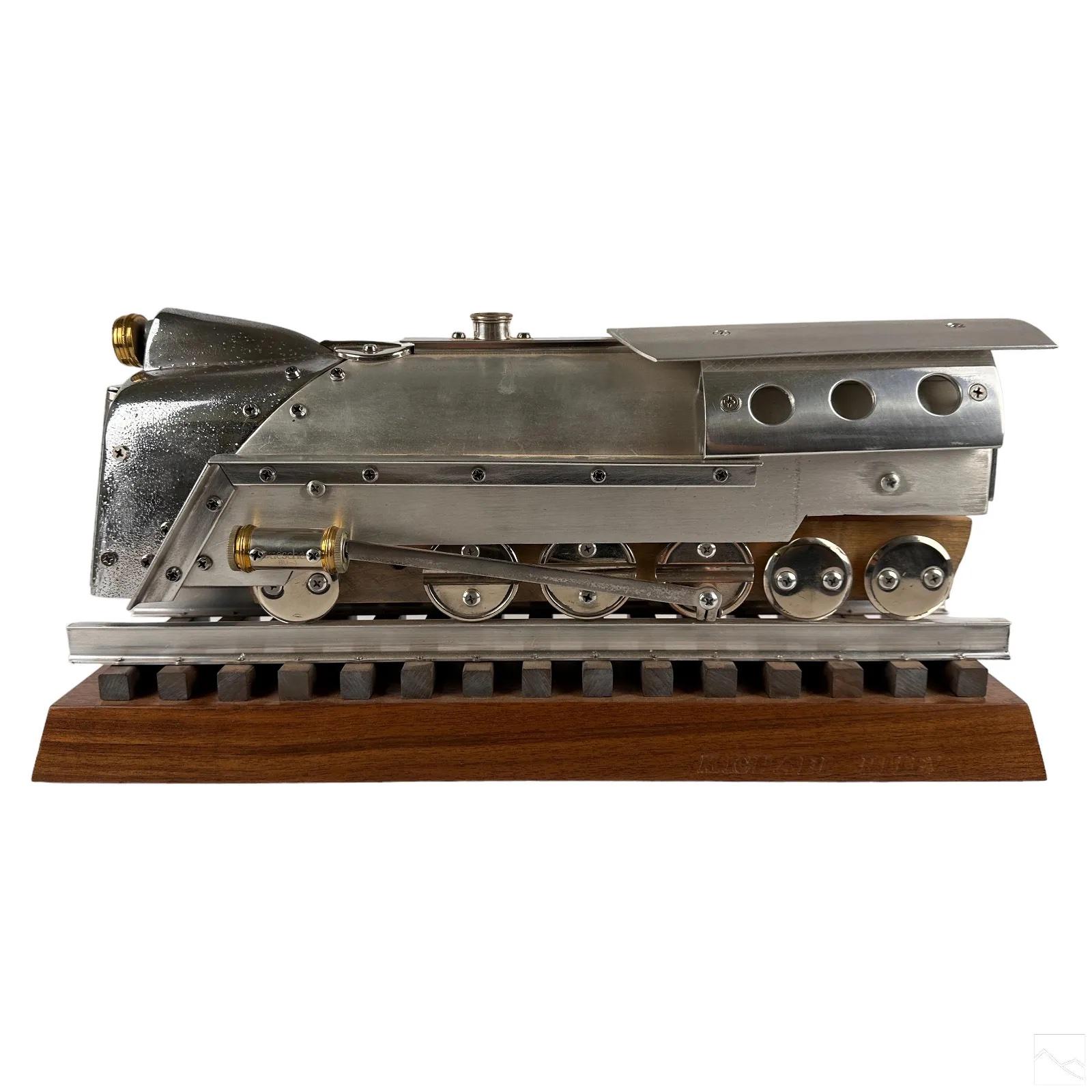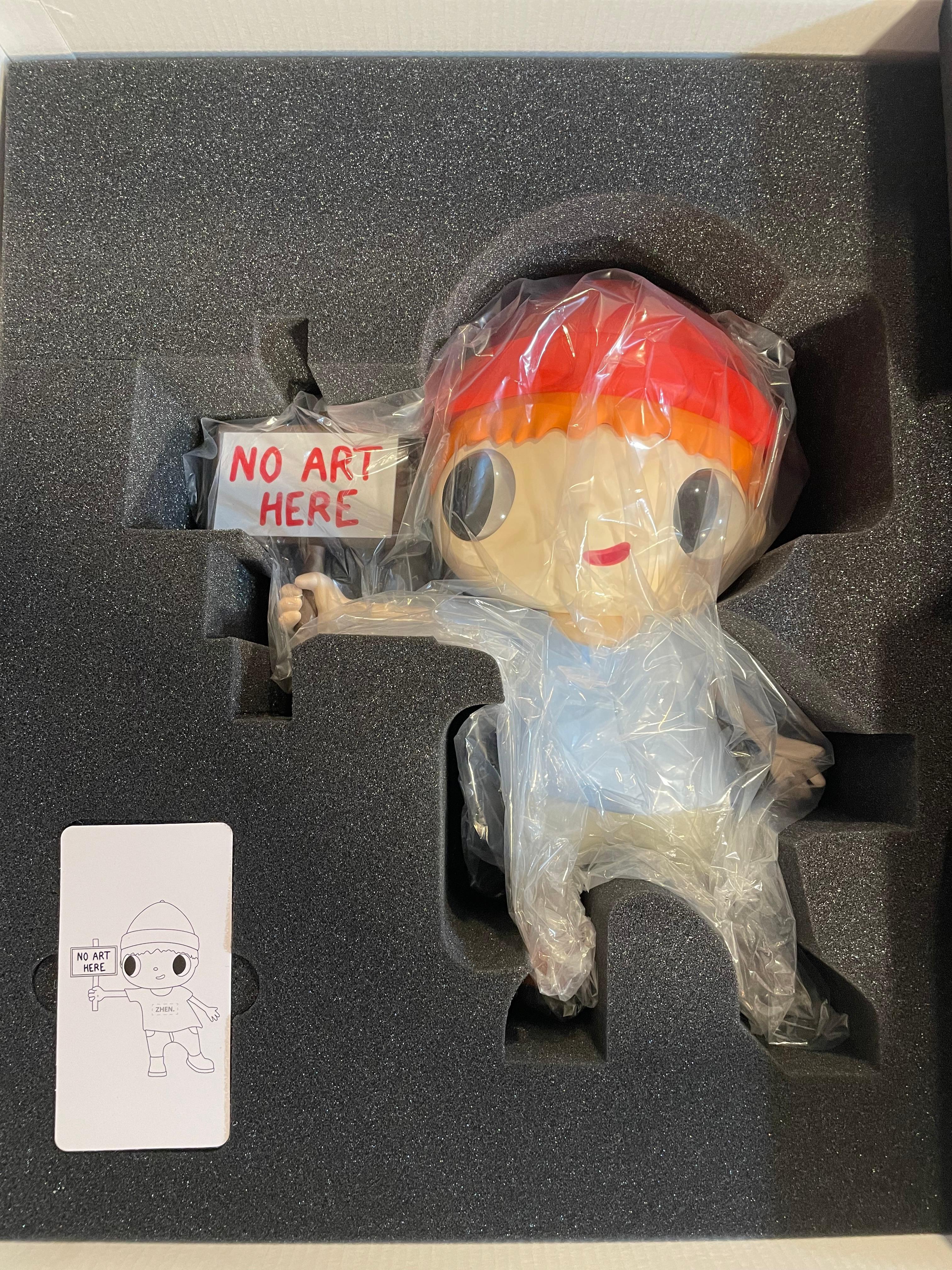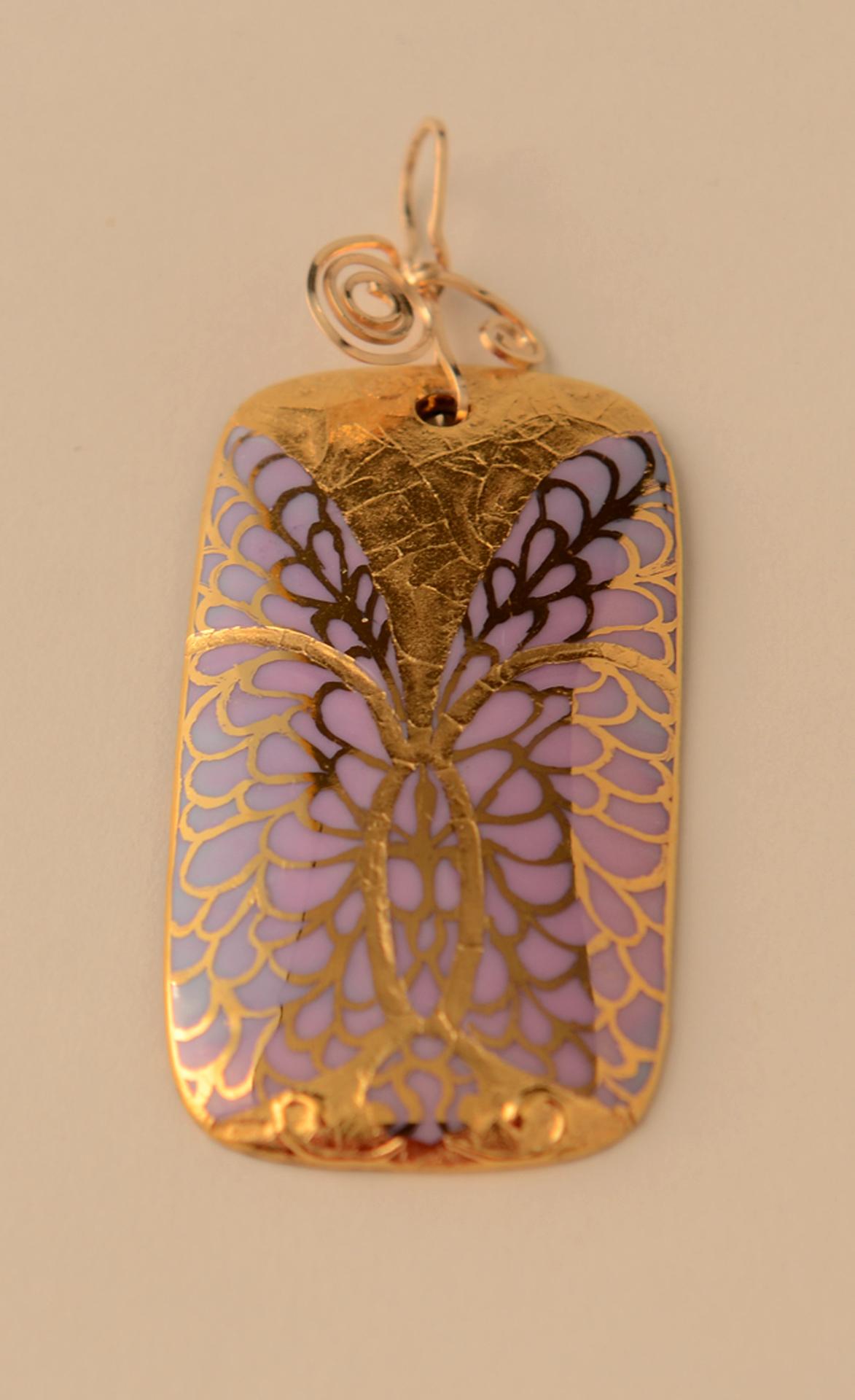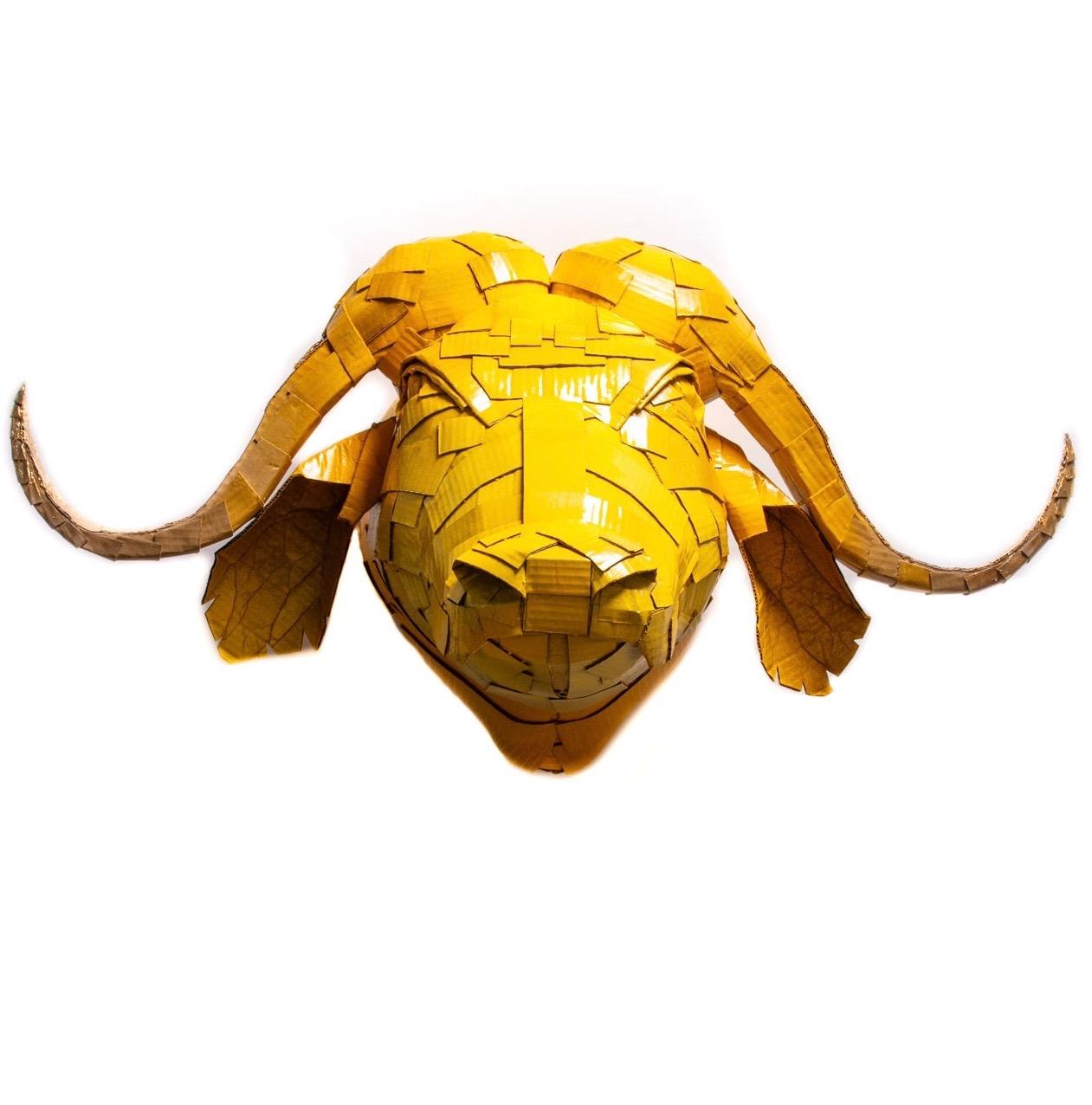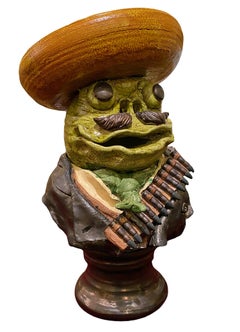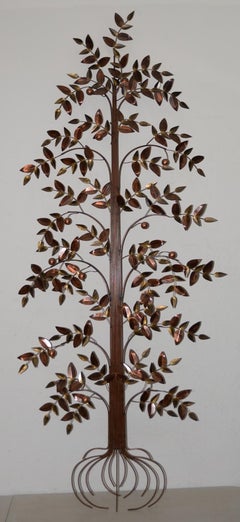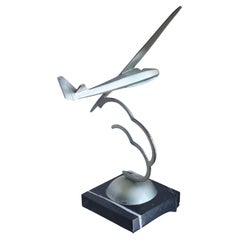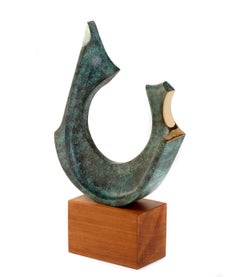
Marsh Marigold Jardiniere (Fern Planter)
View Similar Items
Tiffany StudiosMarsh Marigold Jardiniere (Fern Planter)1905
1905
About the Item
- Creator:Tiffany Studios
- Creation Year:1905
- Dimensions:Height: 3.5 in (8.89 cm)Diameter: 11 in (27.94 cm)
- Medium:
- Movement & Style:
- Period:
- Condition:
- Gallery Location:Missouri, MO
- Reference Number:1stDibs: LU74732428951
Tiffany Studios
The hand-crafted kerosene and early electric lighting fixtures created at Tiffany Studios now rank among the most coveted decorative objects in the world. Tiffany designs of any kind are emblematic of taste and craftsmanship, and Tiffany glass refers to far more than stained-glass windows and decorative glass objects. The iconic multimedia manufactory’s offerings include stained-glass floor lamps, chandeliers and enameled metal vases. The most recognizable and prized of its works are antique Tiffany Studios table lamps.
The name Tiffany generally prompts thoughts of two things: splendid gifts in robin’s-egg blue boxes and exquisite stained glass. In 1837, Charles Lewis Tiffany co-founded the former — Tiffany & Co., one of America’s most prominent purveyors of luxury goods — while his son, Louis Comfort Tiffany, is responsible for exemplars of the latter.
Louis was undoubtedly the most influential and accomplished American decorative artist in the decades that spanned the late 19th and early 20th centuries. Rather than join the family business, he studied painting with several teachers, notably the scenic painter Samuel Colman, while spending long periods touring Europe and North Africa. Though he painted his entire career, visits to continental churches sparked a passionate interest in stained glass. Tiffany began experimenting with the material and in 1875 opened a glass factory-cum-laboratory in Corona, Queens — the core of what eventually became Tiffany Studios.
In his glass designs, Tiffany embraced the emerging Art Nouveau movement and its sinuous, naturalistic forms and motifs. By 1902, along with glass, Tiffany was designing stained-glass lamps and chandeliers as well as enameled metal vases, boxes and bowls, and items such as desk sets and candlesticks. Today such pieces epitomize the rich aesthetics of their era.
The lion’s share of credit for Tiffany Studios table lamps and other fixtures has gone to Louis. However, it was actually Clara Driscoll (1861–1944), an Ohio native and head of the Women’s Glass Cutting Department for 17 years, who was the genius behind the Tiffany lamps that are most avidly sought by today’s collectors. A permanent gallery of Tiffany lamps at the New-York Historical Society celebrates the anonymous women behind the desirable fixtures.
Find antique Tiffany Studios lamps, decorative glass objects and other works on 1stDibs.
- Emiliano Zapata / Frog RevolutionaryBy David GilhoolyLocated in Missouri, MOEmiliano Zapata / Frog Revolutionary, 1981 By David Gilhooly (1943-2013) 20" x 11.5" Whimsical and irreverent, Mr. Gilhooly was internationally accla...Category
20th Century American Modern Figurative Sculptures
MaterialsCeramic
Price Upon Request - Frog and Swiss on RyeBy David GilhoolyLocated in Missouri, MOFrog and Swiss on Rye, 1981 By David Gilhooly (1943-2013) 4.75" x 3.5" x 4.5" Whimsical and irreverent, Mr. Gilhooly was internationally acclaimed for his imaginative ceramic works...Category
20th Century American Modern Figurative Sculptures
MaterialsCeramic
Price Upon Request - Burrito FrogBy David GilhoolyLocated in Missouri, MOBurrito Frog, 1981 By David Gilhooly (1943-2013) 8" x 4" x 2" Signed Underneath Whimsical and irreverent, Mr. Gilhooly was internationally acclaimed for his imaginative ceramic work...Category
20th Century American Modern Still-life Sculptures
MaterialsCeramic
Price Upon Request - Nasiterna BruijniBy John GouldLocated in Missouri, MOJohn Gould (British, 1804-1881) Nasiterna Bruijni c. 1849-1861 Hand Colored Lithograph Image Size: approx 19.5 x 13.5 inches Framed Size: 27 3/8 x 21 1/2 inches John Gould was an English ornithologist and bird artist. The Gould League in Australia was named after him. His identification of the birds now nicknamed "Darwin's finches" played a role in the inception of Darwin's theory of evolution by natural selection. Gould's work is referenced in Charles Darwin's book, On the Origin of Species. Gould was born in Lyme Regis, Dorset, the son of a gardener, and the boy probably had a scanty education. Shortly afterwards his father obtained a position on an estate near Guildford, Surrey, and then in 1818 became foreman in the Royal Gardens of Windsor. He was for some time under the care of J T Aiton, of the Royal Gardens of Windsor. The young Gould started training as a gardener, being employed under his father at Windsor from 1818 to 1824, and he was subsequently a gardener at Ripley Castle in Yorkshire. He became an expert in the art of taxidermy, and in 1824 he set himself up in business in London as a taxidermist, and his skill led to him becoming the first Curator and Preserver at the museum of the Zoological Society of London in 1827. Gould's position brought him into contact with the country's leading naturalists, and also meant that he was often the first to see new collections of birds given to the Society. In 1830 a collection of birds arrived from the Himalayas, many not previously described. Gould published these birds in A Century of Birds from the Himalaya Mountains (1830-1832). The text was by Nicholas Aylward Vigors, and the illustrations were lithographed by Gould's wife Elizabeth, daughter of Nicholas Coxen of Kent. This work was followed by four more in the next seven years including Birds of Europe in five volumes - completed in 1837, with the text written by Gould himself, edited by his clerk Edwin Prince. Some of the illustrations were made by Edward Lear as part of his Illustrations of the Family of Psittacidae in 1832. Lear however was in financial difficulty, and he sold the entire set of lithographs to Gould. The books were published in a very large size, imperial folio, with magnificent coloured plates. Eventually 41 of these volumes were published with about 3000 plates. They appeared in parts at £3 3s. a number, subscribed for in advance, and in spite of the heavy expense of preparing the plates, Gould succeeded in making his ventures pay and in realizing a fortune. In 1838 he and his wife moved to Australia to work on the Birds of Australia and shortly after his return to England, his wife died in 1841. When Charles Darwin presented his mammal and bird specimens collected during the second voyage of HMS Beagle to the Geological Society of London at their meeting on 4 January 1837, the bird specimens were given to Gould for identification. He set aside his paying work and at the next meeting on 10 January reported that birds from the Galápagos Islands, which Darwin had thought were blackbirds, "gross-bills" and finches were in fact "a series of ground Finches which are so peculiar" as to form "an entirely new group, containing 12 species." This story made the newspapers. In March, Darwin met Gould again, learning that his Galápagos "wren" was another species of finch and the mockingbirds he had labeled by island were separate species rather than just varieties, with relatives on the South American mainland. Subsequently Gould advised that the smaller southern Rhea specimen that had been rescued from a Christmas dinner...Category
1850s Naturalistic Animal Prints
MaterialsLithograph
- Nasiterna PygmaeBy John GouldLocated in Missouri, MOJohn Gould (British, 1804-1881) Nasiterna Pygmae c. 1849-1861 Hand Colored Lithograph Image Size: approx 19.5 x 13.5 inches Framed Size: 27 3/8 x 21 1/2 inches John Gould was an English ornithologist and bird artist. The Gould League in Australia was named after him. His identification of the birds now nicknamed "Darwin's finches" played a role in the inception of Darwin's theory of evolution by natural selection. Gould's work is referenced in Charles Darwin's book, On the Origin of Species. Gould was born in Lyme Regis, Dorset, the son of a gardener, and the boy probably had a scanty education. Shortly afterwards his father obtained a position on an estate near Guildford, Surrey, and then in 1818 became foreman in the Royal Gardens of Windsor. He was for some time under the care of J T Aiton, of the Royal Gardens of Windsor. The young Gould started training as a gardener, being employed under his father at Windsor from 1818 to 1824, and he was subsequently a gardener at Ripley Castle in Yorkshire. He became an expert in the art of taxidermy, and in 1824 he set himself up in business in London as a taxidermist, and his skill led to him becoming the first Curator and Preserver at the museum of the Zoological Society of London in 1827. Gould's position brought him into contact with the country's leading naturalists, and also meant that he was often the first to see new collections of birds given to the Society. In 1830 a collection of birds arrived from the Himalayas, many not previously described. Gould published these birds in A Century of Birds from the Himalaya Mountains (1830-1832). The text was by Nicholas Aylward Vigors, and the illustrations were lithographed by Gould's wife Elizabeth, daughter of Nicholas Coxen of Kent. This work was followed by four more in the next seven years including Birds of Europe in five volumes - completed in 1837, with the text written by Gould himself, edited by his clerk Edwin Prince. Some of the illustrations were made by Edward Lear as part of his Illustrations of the Family of Psittacidae in 1832. Lear however was in financial difficulty, and he sold the entire set of lithographs to Gould. The books were published in a very large size, imperial folio, with magnificent coloured plates. Eventually 41 of these volumes were published with about 3000 plates. They appeared in parts at £3 3s. a number, subscribed for in advance, and in spite of the heavy expense of preparing the plates, Gould succeeded in making his ventures pay and in realizing a fortune. In 1838 he and his wife moved to Australia to work on the Birds of Australia and shortly after his return to England, his wife died in 1841. When Charles Darwin presented his mammal and bird specimens collected during the second voyage of HMS Beagle to the Geological Society of London at their meeting on 4 January 1837, the bird specimens were given to Gould for identification. He set aside his paying work and at the next meeting on 10 January reported that birds from the Galápagos Islands, which Darwin had thought were blackbirds, "gross-bills" and finches were in fact "a series of ground Finches which are so peculiar" as to form "an entirely new group, containing 12 species." This story made the newspapers. In March, Darwin met Gould again, learning that his Galápagos "wren" was another species of finch and the mockingbirds he had labeled by island were separate species rather than just varieties, with relatives on the South American mainland. Subsequently Gould advised that the smaller southern Rhea specimen that had been rescued from a Christmas dinner...Category
Mid-19th Century Naturalistic Animal Prints
MaterialsLithograph
- FlamingosBy William R. LeighLocated in Missouri, MOFlamingos By William Robinson Leigh (1866-1955) Signed Lower Left Unframed: 12" x 10" Framed: 21" x 17.5" Born near Falling Waters, West Virginia on a plantation a year after the Civil War, and raised in Baltimore, William Leigh became one of the foremost painters of the American West with a career of seventy-five years. Some people referred to him as the "Sagebrush Rembrandt". He was the son of impoverished Southern aristocrats and took his first art training at age 14 from Hugh Newell (1830-1915) at the Maryland Institute where he was regarded as one of the best students in his class. From 1883 to 1895, he studied in Europe, mainly at the Royal Academy in Munich with Ludwig Loefftz. From 1891 to 1896, he painted six cycloramas or murals in the round, a giant German panorama. In 1896, he began working as a magazine illustrator in New York City for Scribner's and Collier's Weekly Magazine, and he also painted portraits, landscapes, and genre scenes. However, he was not a very successful artist in those years in New York. Trips to the Southwest began in 1906 when he made an agreement with William Simpson, Santa Fe Railway advertising manager, to paint the Grand Canyon in exchange for free transportation West. In 1907, he completed his Grand Canyon painting...Category
20th Century Naturalistic Animal Drawings and Watercolors
MaterialsPen, Ink
Price Upon Request
- Curtis Jere Copper Toned Metal Tree Sculpture c.1970sBy Curtis JeréLocated in San Francisco, CACurtis Jere Copper Toned Metal Tree Sculpture c.1970s Tall and elegant tree sculpture by listed American artist Curtis Jere. The tree is made from...Category
Mid-20th Century Naturalistic Still-life Sculptures
MaterialsMetal
$1,850 Sale Price32% Off - Roland Paris Bronze Statue Glider 1933 Schneider Grunau Baby GliderLocated in Oakland, CARoland Paris Bronze Statue Glider 1933. This glider was originally based on the Schneider Grunau Baby Glider from 1931. It held the world record fo...Category
1930s Art Deco More Art
MaterialsMarble, Bronze
- Curved Form -original geometrical abstract sculpture-artwork-contemporary ArtLocated in London, Chelsea"Curved Form" by David Sprakes is an original table-top bronze sculpture that commands attention with its abstract interpretation of form and geometry. Crafted in bronze and offered ...Category
21st Century and Contemporary Modern Still-life Sculptures
MaterialsBronze
- Art Nouveau European BoxLocated in Troy, NYThis elegant Art Nouveau box was originally made in France circa. 1910, and remains in very good condition. It was acquired from a French estate. The lid of the box is decorated with...Category
1910s Art Nouveau Still-life Sculptures
MaterialsMetal, Bronze
- VirginiaBy Carolyn BarlockLocated in Loveland, CO"Virgina" by Carolyn Barlock One-of-a-kind Luster and Gold on Porcelain 3x3" Vase with floral design hand-carved, gilt and glazed ABOUT THE ARTIST: From its beginnings in Baghdad i...Category
2010s Contemporary More Art
MaterialsGold, Gold Leaf
- Meditate Tea Cups, 3"x3" Luster and Gold on PorcelainBy Carolyn BarlockLocated in Loveland, CO"Meditate" by Carolyn Barlock One-of-a-kind Luster and Gold on Porcelain 3x3" each, demitasse teacups with pansy floral design hand-carved, gilt and glazed signed and numbered on th...Category
2010s Contemporary More Art
MaterialsGold, Gold Leaf
